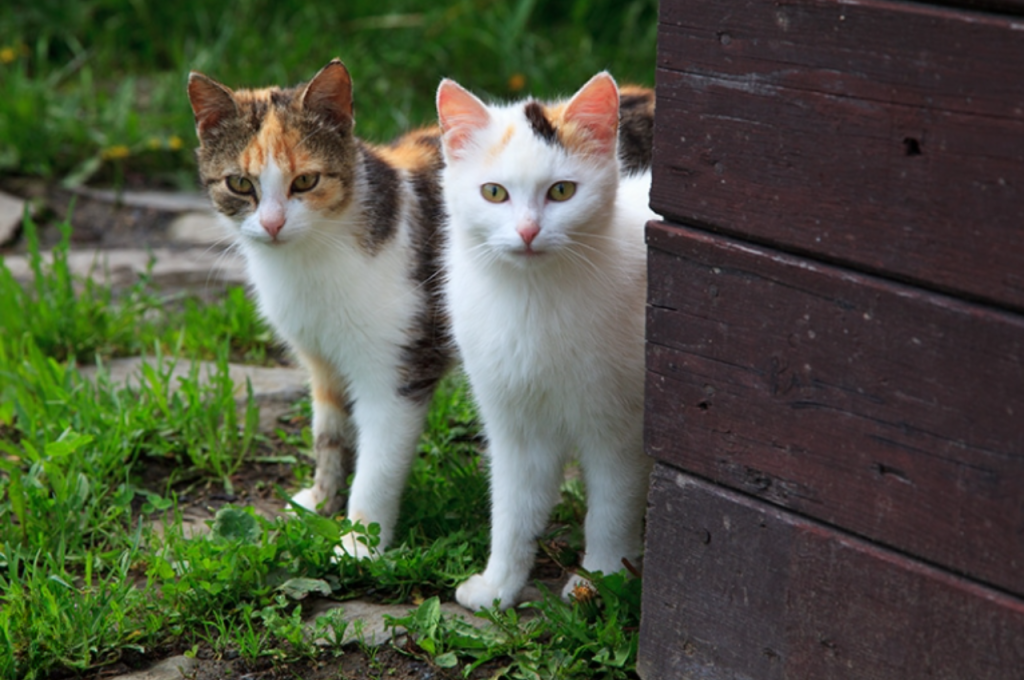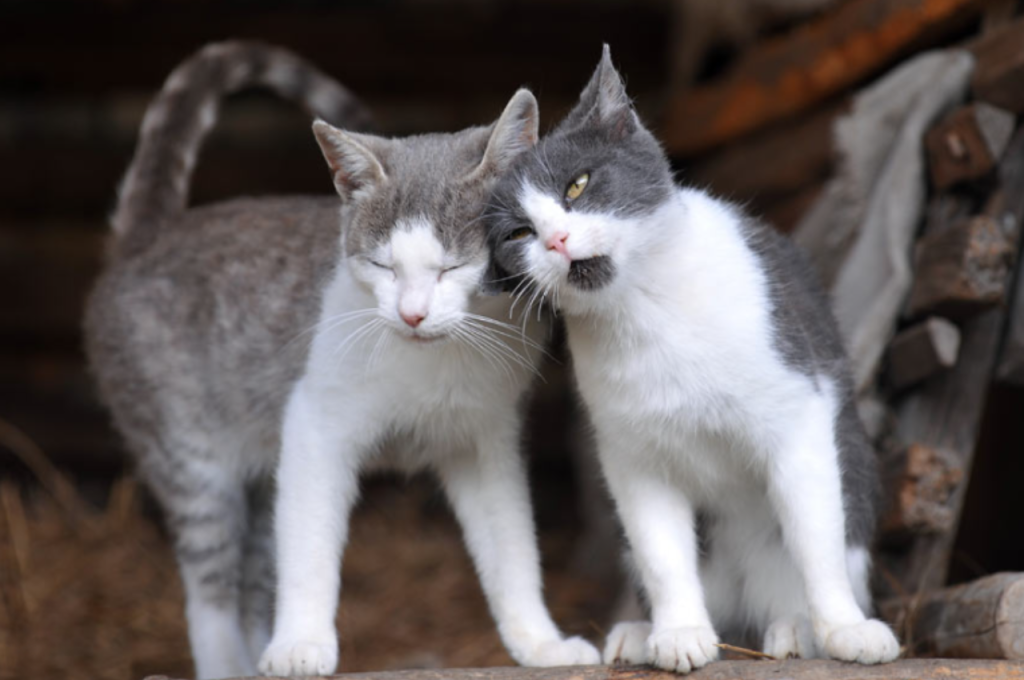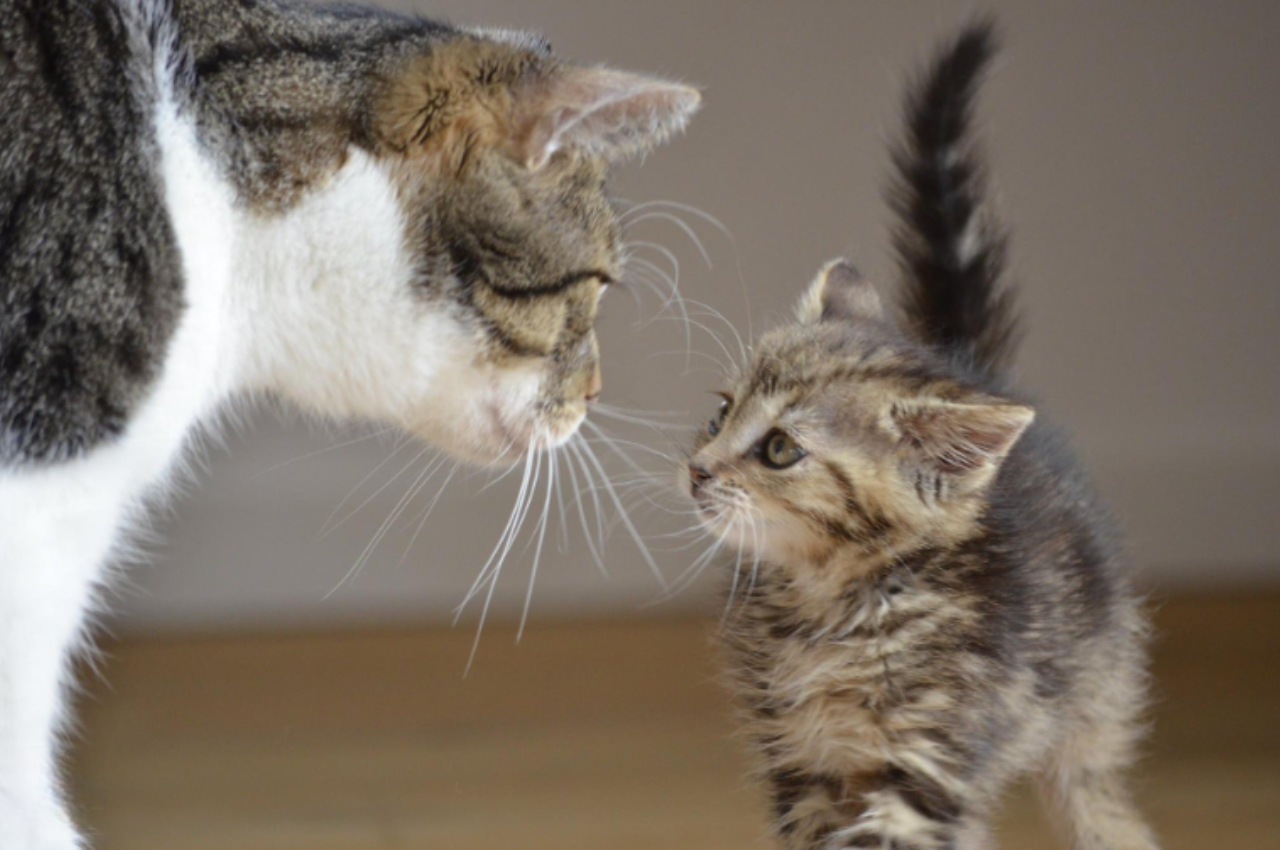Cats do recognize their siblings, often forming strong social bonds with them throughout their lives. As social creatures, cats have a remarkable ability to remember and recognize familiar individuals, including their siblings.
These recognition skills are primarily based on scent, vocalizations, and body language. Siblings raised together in the same litter tend to have a stronger bond, engaging in mutual grooming and displaying signs of affection towards one another. While some cats may lose contact with their siblings as they grow older, their ability to remember and recognize their littermates can persist well into adulthood.
The Social Structure of Cats
When it comes to our feline friends, understanding their social structure can provide fascinating insights into their behavior. Cats are not typically known for their social nature like dogs, but they do have their unique social system that revolves around their territorial instincts and hierarchical order.

Territorial Nature
Cats are territorial creatures, and this innate instinct plays a significant role in their social interactions. They establish and defend their territory, which can range from a small area within a home to a larger outdoor territory. This territorial behavior is closely linked to their survival instincts and is a way for them to mark their space and feel secure.
While cats may share their territory with other cats, they are highly motivated to defend their area against intruders. This territorial nature also influences how cats interact with their siblings. When cats grow up together, they often form strong bonds, recognizing each other as part of their “family” within their shared territory.
Hierarchical System
Cats have a hierarchical system in which they establish a social order within their community. This order is based on dominance and submission, with certain cats having a higher status than others. Within a group of siblings, a dominant cat usually emerges, establishing their authority.
This hierarchical system determines the dynamics within the group, as each cat understands their place in the pecking order. The dominant cat usually takes charge of important resources, such as food, sleeping spots, and access to preferred areas within their territory. While this may sound like a strict system, it helps to maintain stability and reduce conflicts within the group.
The hierarchical structure also influences the way cats interact with each other. Sibling cats that have grown up together often establish a mutual understanding and respect for each other’s rank within the hierarchy. They may engage in grooming and other friendly behaviors as a way of reinforcing their bond and acknowledging their place in the social order.
While cats may not recognize their siblings in the same way humans do, their social structure and territorial nature play essential roles in shaping their relationships. Understanding these aspects can give us valuable insights into why cats behave the way they do and how they interact with their siblings and other cats in their environment.
The Bond Between Feline Family Members
Cats are known for their strong family bonds, and their relationships with their siblings and mother are no exception. Understanding the dynamics of feline family connections can shed light on the intriguing social behavior of these beloved pets. Let’s delve into the captivating world of cat family relationships.
Mother and Kittens
The bond between a mother cat and her kittens is undeniably one of the most heartwarming aspects of feline family life. From the moment they are born, kittens rely on their mother for nourishment, warmth, and protection. The mother cat, with her nurturing instincts, provides essential care for her offspring, fostering a strong sense of security and love within the family unit.
Siblings
The relationship between feline siblings is equally captivating. As kittens, they engage in playful interactions that not only serve as entertainment but also contribute to the development of crucial social skills. These early engagements form the basis of lifelong bonds among siblings, often leading to enduring friendships and support throughout their lives.
Recognition of Siblings
Cats are known for their strong family bonds, but do they recognize their siblings as they grow up? Let’s explore the fascinating topic of feline recognition of siblings and how it manifests in their behavior and interactions.

Scent Recognition
The sense of smell is crucial for a cat’s recognition of its siblings. Cats have an extraordinary ability to associate specific scents with familiar individuals, including their littermates. They use scent marking and memory to identify and bond with their siblings, making scent recognition a significant factor in their relationship dynamics.
Visual and Auditory Cues
Visual and auditory cues also play a role in cats’ recognition of their siblings. Through visual cues such as body language and facial features, as well as auditory cues like meows and vocalizations, cats can identify their siblings even as they mature and interact within their family group. These cues contribute to the ongoing recognition and communication between feline siblings.
Studies and Research
Cats have a remarkable ability to recognize their siblings, based on studies and research. Understanding their familial connections adds to our knowledge of feline social behaviors.
Scientific experiments and behavioral observations have shed light on the fascinating question of whether cats recognize their siblings. These studies provide valuable insights into the complex social behaviors of cats and the depth of their interpersonal connections. Let’s delve into the scientific experiments and behavioral observations that have uncovered the truth about this intriguing topic.
Scientific Experiments
Scientists have conducted various scientific experiments to determine if cats can recognize their siblings. One study involved presenting cats with different scents from various individuals, including their siblings, unfamiliar cats, and themselves. The results revealed that cats showed a higher level of interest and inquisitiveness towards the scents of their siblings compared to unfamiliar cats or their scent.
Another experiment explored whether cats exhibit preferential behavior towards their siblings. Researchers observed the interactions between pairs of siblings and pairs of unrelated cats. They documented instances of grooming, playing, and territorial behavior. The findings demonstrated that sibling cats engaged in significantly more positive social interactions and displayed less aggression towards each other compared to unrelated cats.
Behavioral Observations
Researchers have also carried out behavioral observations to determine if cats recognize their siblings based on their behavior. A common approach is to monitor the reactions of cats when they encounter their siblings after a period of separation. In such instances, cats often display behaviors such as head rubbing, grooming, and vocalizations that indicate recognition and familiarity.
Furthermore, when cats are raised together from birth, they tend to develop a strong bond and display a greater level of affection towards their siblings. They may engage in synchronized behaviors, such as sleeping or grooming simultaneously, which further suggests a recognition and connection between siblings.
Factors Influencing Recognition
Cats rely on scent more than visual cues to recognize siblings due to their strong sense of smell. Social interaction during kittenhood also plays a significant role in fostering recognition among littermates.
Early Socialization
Cats are more likely to recognize their siblings if they had significant interactions during the critical early socialization period.
Environment and Living Conditions
The environment where cats grow up plays a crucial role in their ability to recognize siblings.
Implications of Sibling Recognition
Cats do recognize their siblings through scent and visual cues which can impact their social behavior and interactions. Sibling recognition helps in forming bonds and establishing hierarchies within the feline group, influencing how they communicate and cooperate.
Social Stability
Cats recognizing their siblings can lead to a stable social structure among feline groups.
Inbreeding Avoidance
The ability to differentiate siblings helps cats avoid inbreeding, maintaining genetic diversity.
Practical Applications
Cats’ ability to recognize their siblings has practical applications, particularly in helping cat owners understand and promote healthy relationships among their feline companions. By delving into the understanding of cat behavior and implementing strategies to promote positive interactions, you can foster harmonious relationships within your furry family.

Understanding Cat Behavior
Understanding cat behavior is essential in discerning how felines relate to their siblings. Cats may exhibit behaviors such as grooming, playing, and sleeping close to their siblings, displaying social bonds and recognition. These cues can help owners identify and support positive relationships within their cat groups.
Promoting Healthy Relationships
Promoting healthy relationships among siblings and other cat companions involves creating a harmonious environment through socialization, enriching living spaces, and ensuring each cat’s individual needs are met. Providing multiple resources like litter boxes, scratch posts, and cozy resting spots can reduce potential conflicts and foster positive interactions.
Conclusion
Cats share a unique bond with their siblings, and while they may not recognize them per se, they can still exhibit a sense of familiarity. Through scent and body language, cats can establish connections with each other. Understanding these dynamics can help cat owners create a harmonious environment for their feline companions.
So, next time you introduce two cats from the same litter, remember that there might just be a special connection between them.
